#the rice water saga
Note
Damian: Drake, what are you doing?
Tim: I’m, uh, cooking.
Damian: You cook?
Tim: Yes, I cook. I like to eat, too.
Damian: Why is it bubbling like that?
Tim: Well that’s because it’s—
Jason: It’s drugs.
Tim: What??
Damian: 👀
Jason: Hardcore drugs.
Tim: It is NOT.
Damian: I had no idea you were engaged in the preparation of narcotics, Drake. I’m sure Father will be most displeased to hear about this.
Tim: This is just—rice water. I’m making rice water. FOR MY HAIR.
Damian: The idea of you putting a single iota of concern into your appearance is much less believable than you deciding to—what was it Brown said the other day?—make like Walter White and sell meth.
Tim: This isn’t even how you prepare meth!
Damian: And how would you know?
Jason: Go tell Bruce, Dami. I’ll keep an eye on Tim so he can’t destroy the evidence.
Damian: Excellent idea, Todd.
Tim: This is a ridiculous waste of everyone’s time. Just let me go back to my rice water.
Jason: Better drink it up before Bruce gets here.
Tim: What did I do to you to deserve this?
Jason: Remember that time you bleached my hair so I could be, and I quote, “a white haired anime man”?
Tim: You agreed to that!
Jason: I WAS BRIBED
.
#this is SENDING me#satire#chat#tim drake#jason todd#damian wayne#the rice water saga#tim makes meth
188 notes
·
View notes
Note
I'm glad to hear that Kaname protected Momo from the worst of Aizen's manipulations. Does she ever find out about his efforts, or does that stay a secret?
Post-Aizen-Fight, Kaname is in the hospital recovering from General Befuckening, and needs Reiatsu transfers to finish purging The Curse from his system and it's Hitsugaya's turn.
*****
The boy doesn't actually say anything for a long time after Unohana finishes connecting the IVs. It's alright. He's still exhausted, and there really isn't that much to say about what happened that hasn't been gone over and over and over, in debriefings and staff meetings and the distant sound of tears Tousen can hear coming from Lieutenant Hinamori's room. Gradually though, Lieutenant Hitsugaya's silence grows cold and sharp and restless, a winter gale banging against a window that won't quite latch right.
"-Out with it." Kaname sighs, opening his eyes and not frowning at the ceiling. "If you keep sulking like this I'm going to get frostbite and Unohana-sama will have both our hides for it."
Toshiro startles, coughs a bit like he's about to deny it, but collects himself and states his problem with magnificent succinctness.
"Momo." he says, voice almost violent in it's neutrality.
"Ah." Kaname nods. "I did what I could, but I know that was far from enough. I am sorry."
Hitsugaya is quiet, considering his words. "...What did you DO, actually?" he eventually asks.
Kaname blinks in surprise. "Huh. I thought Hisagi-san would have noticed when he did the audit of all my paperwork. I was genuinely hopeful you were going to spot it before Aizen could make his move with how much Momo complained..." he muttered, slightly puzzled.
"Spotted what?" Toshiro grumbled.
"You have undoubtedly been subject to the ongoing saga of the Rice-Farm-Subsidy Fraud case that Lieutenant Hinamori has been investigating since her promotion to lieutenancy?" Kaname prompted.
"Yeah, yeah, the one that's got her haring off to some backwater district or getting lost in the stacks at the archives for days on end or-" Hitsugaya graoned, then stopped. "...the one that had her constantly traveling away from the division, or doing extended research without Aizen's help."
"He used to get terrible motion sickness from trains or portals, you know." Kaname smiled, sitting up a bit. "-and a wretched allergy to paper-dust. Part of the reason he made me do all his fucking lab work, I imagine. but it seemed a good way to keep Miss Hinamori outside his sphere of influence at least for a few weeks at a time. Do I still have water in my glass?"
"...you MADE IT UP?" Hitsugaya yelped.
"I did no such thing. There is an extensive conspiracy between the various provincial leaders and mid-district governors to defraud the Central Government of subsidies for rice farms that frankly, do not exist, while also hiding the existence of taxable villages, resulting in invisible granaries used to fund private armies and other villiany-" he explained, sitting up properly and groping for the end-table where his water theoretically was. "-I just made sure Miss Hinamori had enough information to know where to look for the evidence of said conspiracy, and occasionally... lightly interfered with granaries in the middle districts to make sure more visible evidence came to light for her to keep the investigation open and moving in a timely manner. Lieutenant, if I may ask for your help-"
There was a rustle of cloth as Hitsugaya shook himself, grabbing the pitcher and refilling Kaname's glass, handing it to the frail man.
"Thank you." Kaname took a drink, handing the glass back to Toshiro to set down. "-I imagine the investigation will go much faster and with fewer extended trips to the rukongai now that I'm not cursed and can freely discuss the taxation and census records Aizen had covered in his illusion to hide his experiments." he explained. "...But doing it the long way has allowed Miss Hinamori to build a very complete and entirely legitimate case. She's an exceptional forensic investigator."
"...HOW?" Hitsugaya gaped. "The curse- it's not like you could talk to her, or send her messages- and if you could, it'd mess with the legitimacy of the case to have an anonymous tipster?"
"I had to...sort of gently suggest the names and locations to her in such fashion that her subconscious would make the connection between those terms and the case. Fortunately, in addition to being a certifiable genius, Miss Hinamori is also a master of the Lingual Arts."
"...Sir, I don't think Hinamori is that kind of girl." Toshiro mumbled, and Kaname could almost hear his full-face blush.
"You're thinking of Zaraki-Taicho, who is an entirely different kind of cunning linguist." Momo announced from the door. "-but you don't know everything about me Toshiro." She teased, coming in the room and climbing onto the bed beside Kaname, unfolding and re-folding that week's newspaper. "Lieutenant Sasakibe took over the crossword in your absence, and I think he may still be a bit upset with you."
"Ah." Kaname winced.
"What?" Repeated Toshiro, thoroughly lost.
"You remember that Tousen-taicho is the Editor-In-Chief of the Seireitei Newsletter, right?" She asked Hitsugaya, who failed to respond in a fashion that suggested that he did not, in fact, know that. "-Anyway, sometimes he writes more or less for the paper depending on that week's news, but without fail, he also designs the crossword- the most fiendishly difficult one in any of the newspapers, Sir." She explained, taking out a pen and tapping the partially-finished lexical puzzle she'd been working on.
"I try." Kaname smiled, looking just a bit genuinely smug.
"You largely succeed. I didn't actually make the connection between your five downs and the rice subsidy investigation until i tried doing Sasakibe's substitute puzzle this morning. I think he may have made the same connection, because 5 down today is 11 letters, starts with "P" and the clue is 'Degenerate Justice'."
"...Prevaricate." Kaname hissed with imagined pain at the likely wrath of the Chief Lieutenant. "Oh dear. Do you think a written apology is in order?"
"It's Sasakibe-san, it's just as likely to be his idea of an apology." Momo shrugged, filling in the word.
"...for those of us that are better at Sudoku?" Hitsugaya glared.
"Tousen-Taicho was putting clues about where the next bit of evidence I needed for the Rice Subsidies case in the Crossword because he knew I did it every week." Momo explained. "The clue was always in the fifth column down, which is a structurally important one in crosswords- you little shit, I even got on your case last year about how you always used locations for your 5 Downs and I STILL didn't make the connection!" She realized, rolling up the paper and affectionately swatting him over the head.
"Entirely deserved, but you have my word that was as much as I could do to help you, and that you have my full resources available to you now." Kaname smiled.
"I have entirely too many words from you-" Momo sighed with exasperation before putting the paper down and laying down beside him, hugging his chest. "-But I believe you. There's- I've been finding all sorts of things- people I forgot, places I'd been before and couldn't remember- huge sections of my LIFE! that his Illusion just... vanished."
She hugged Kaname's chest. "-I can't imagine what you went through."
"I hope you never will." he sighed, returning her embrace and for a moment, Hitsugaya felt even more outside the conversation- this was a secret grief, but the burden lightened by finally being able to share it. "...Did Sasakibe Key any clues to 5 Down? He might have more to say." Kaname asked, letting go and Momo sat up, frowning at the paper.
"Key?" Asked Toshiro, pleased to be talking about anything else.
"Sometimes one word is a hint to some of the next words, usually the ones that originate from it, um- Yeah, three words. Four letters, second letter 'i', clue is "Astronomical Favor"; Three letters, middle letter 'a', clue is "German Opera, 1874" ; and the last one is four letters, Second letter 'e', clue is "Truth's Abode". Momo read off.
All three of them stared (or pointed their faces) blankly at each other for a moment.
"...Yeah I'm gonna stick to the Sudoku." Nodded Hitsugaya.
#AEIWAM#an elephant is warm and mushy#Bleach#Bleach fanfic#kaname tousen#momo hinamori#Toshiro hitsugaya#Crosswords are fun i promise!#bonus points to whoever figures out Sasakibe's Secret Message!
214 notes
·
View notes
Note
The ending to the brown sugar saga!!
Ok I made 2 drinks(several hours between each other of course) one a regular black milk tea and the second a matcha milk tea
I'd give the black tea an 7/10; the black tea flavor didn't really come out it mostly just tasted like milk and brown sugar but it wasn't bad by any means (it's probably cuz of the way I prepared it lol)
Then I'll give the matcha a 9/10; the matcha flavor and the brown sugar mixed really well together and generally it's just a nice yummy drink :D
Ok now there's 2 things I learned while making the boba:
1. Make sure to drain out the water from the boba properly otherwise the syrup is gonna become diluted and it won't give you the tiger stripe effect cuz it's too watery
2. Don't store your boba in the fridge, it'll harden to more of a gummy worm hardness than the ideal softer but still chewy texture
And that's it! I had fun and it was I nice experience despite some of the headaches it caused me (like how the syrup hardened for absolutely no reason without warning lol)
Ok have a nice day now bye <3
- Captain Rice 🍚
Yaaaay new recipes are always a lotta fun, even if they don’t turn out exactly as we hoped.. ty for sharing your brown sugar syrup tea saga :D
12 notes
·
View notes
Text
Zolu Canon part 1
Luffy? Can you hear me? Sorry for worrying you. If I don't become the world's greatest swordsman, that would be a problem for you, wouldn't it? I...I will...I WILL NEVER LOSE AGAIN! Until I defeat him and become the greatest swordsman, I'll never be defeated again! Any problems with that, Pirate King?!ZORO.
Why should I be scared of Kaido? If my captain gives the order, I'll just follow.ZORO IN EPISODE 1014
Who, Zoro?! Don't worry about him! He can pull through anything!LUFFY.
ZoLu is the slash ship between Roronoa Zoro and Monkey D. Luffy from the One Piece fandom.
ADVERTISEMENT
Canon
East Blue Saga
Romance Dawn Arc❤💚
Luffy meets Zoro while he's being held captive by some marines who agreed to set him free only if he survives with no food or water tied up under the sun for a month. Luffy admits to him that he's looking for a crew so he can become King of the Pirates, to which Zoro replies that there's no way that he'd join his crew since he's 'weaker'. Luffy then says that he wouldn't want Zoro on his crew since he's got bad reputation. When Zoro asks Luffy to feed him the rice that a kid prepared him which has been thrown on the ground and was filled with dirt, Luffy deducts that he's a good guy. When Luffy found out Zoro's going to be executed in 3 days and that Helmeppo lied, he proceeds to beat him up and declares that he's gonna make Zoro join his crew. As Luffy and Coby head back to the marine quarters, Zoro finds out what Luffy's done when he found out about his execution. Once Luffy gets his swords back and protects Zoro from gunshots, Zoro comes to admire Luffy's strength and tells him that he's earned a crewmate.

#zolu#one piece zolu#one piece#one piece zoro#gear 5 luffy#sunny funny#monkey d. luffy#roronoa zoro#shipping#gay love
47 notes
·
View notes
Text

Poi Saga Besara
Poi Saga Besara" is a traditional Odia dish featuring Malabar spinach (poi saga) cooked in a mustard-based sauce. To prepare, mustard seeds are ground with green chilies, garlic, and ginger to form a paste. The paste is then sautéed with Pancha Phutana (five-spice blend) for aroma before adding turmeric and chopped spinach. The dish is simmered until the spinach is tender, resulting in a flavorful and nutritious accompaniment to rice or roti, characteristic of Odia cuisine.
Ingredients:
250 grams Malabar spinach (poi saga), washed and chopped
2 tablespoons mustard seeds
2-3 green chilies, chopped
2-3 garlic cloves, chopped
1 tablespoon grated ginger
1 teaspoon turmeric powder
1 tablespoon mustard oil or any cooking oil of your choice
Salt to taste
Water as needed
1 teaspoon Pancha Phutana (five-spice blend) - typically includes equal parts of fenugreek seeds, nigella seeds, cumin seeds, black mustard seeds, and fennel seeds
Instructions:
Soak mustard seeds in water for about 30 minutes to soften them.
Drain the mustard seeds and grind them along with green chilies, garlic cloves, and grated ginger to make a smooth paste. You can add a little water if needed to facilitate grinding.
Heat mustard oil in a pan over medium heat. Once the oil is hot, add the Pancha Phutana (five-spice blend) and let it crackle for a few seconds.
Add Green Chilis if want extra spices in saag.
Add the ground mustard paste and sauté for 2-3 minutes until the raw smell of mustard disappears.
Add turmeric powder and stir well to combine with the mustard paste.
Add the chopped Malabar spinach (poi saga) to the pan and mix well with the mustard paste.
Season with salt according to your taste preferences.
Cover the pan and let the spinach cook for about 8-10 minutes, stirring occasionally. If the mixture becomes too dry, you can add a little water to adjust the consistency.
Once the Malabar spinach is cooked and tender, remove the pan from heat.
Serve Poi Saga Besara hot with steamed rice or roti.
3 notes
·
View notes
Text
Chapter1 - Pooh (& Inner Pooh)
Hello Readers…I hope you liked the Intro blog as much as I liked writing it…
One comment which I got from DeeDee was that I should have mentioned my age as, not ‘in thirties’, but rather ‘in late thirties’ !!!! Angry Pooh’s reaction was ‘Why not I say approaching FORTYYY!!!!’ …..(Inner Pooh – ‘If you round it off, you can even say FIFTY….’) GRRRRRRR……..
Guys, I need to introduce you all to another character in my life i.e. 'Inner Pooh'....Don't know what she is.... is she inside me? or outside me? is she some supernatural being???? I have no fucking idea….I just know that it's very difficult to keep her in control…she has her views, her choices, her comments blah blah blah, in every chapter of my life!! It was tough to keep her out of the Intro blog….but now she is going to peekaboo from time to time….please bear with her!!!
Let us now get further into the murky waters of the Pooh Saga….ahem ahem…
I am a happy single with no wants to mingle (Inner Pooh : "As if they care!!").... But I do enjoy ‘window shopping’ (Mr. Momoas and Mr.Clooneys of the world) from time to time….I do not have any budget for actual ‘shopping’ in this life …..however, I do have a long exquisite shopping list for my next life… (Inner Pooh : "God save the world!!")...LOL…
I think I am funny…I may not be ‘Mrs. FunnyBones’ of the world…..but I definitely am ‘Ms. Funnily Crackling Bones’..yeahhhh, my knees have started making crackling sound…OLD AGE KNOCKING!!! (sighhhhhhhhh)
I am labelled as ‘Fake Punjabi’ by my friends…I am a pure vegetarian Punjabi who has never been to Punjab!!!! I knowwwww…laugh at my expense….(Inner Pooh sarcastically : "How funny!! You expect them to laugh at this?? duhhhh" )
If I weren’t Indian, I would definitely be an Italian…why?....simple answer….I love (rather am obsessed) with Pizza and Pasta! (Inner Pooh : “Cheese, Wine…..#drooling”)…I love the way Italians love their food…I adore their open nature, warm and welcoming to all…. (All these ideas are just based on my knowledge gained from books and movies :D I do hope to visit Italy someday…….)
If I am half Punjabi, then I am half Bengali (ohkk…I get it…some similarity with Piku)….I have spent my entire life in Kolkata….and the funny thing is that I can understand Bengali (with all its slangs, courtesy to my college friends) but in 30+ years, I have not learnt to speak Bengali….my Bengali is as good as my Punjabi…’ektu ektu’ (little little) LOL
Those who know me well, very well know, how much I depend on ‘Muri’ (aka puffed rice) in my life….Muri is my soul….Puffed rice making me puffier…but who cares….Muri is Love… (shout-out to all the Bongs who share this love)
I have had the privilege to be associated with various garment sizes…XXXL to XXL to XL to L to M to L to XL….(pleaseeee God not back to XXXL!!!!) Life comes to a circle…I am a big round circle (Inner Pooh : "Stupid Woman! Circle is 2-dimension…you are Spherical…") (Me – "Shut Up !!!!")….ohhk….so I am a big ‘spherical’ ball rolling down the path of life!!!!
I am a crazy freaking romantic…be it Mills & Boon books or Hallmark movies or Lata ji’s songs (may her soul rest in peace)….I am a sucker for all these!!!
I am hazardous to expensive technological stuff….I dare not buy expensive mobiles or television or laptop or blah blah blah….You need to ask Singh Jiju how tortured he feels seeing the way I handle my mobile phone (btw same goes for DeeDee and so you can understand Singh Jiju’s trauma :P )
I have a special ‘God-Gift’ to identify doppelgangers….yeahhhhh….’Heyyy, you look so much like Mr.X’, ‘DeeDee, see! isn’t she looking like Ms.Y’ , ‘I have seen this person somewhere….’ etc etc (Inner Pooh : "It's not a gift, silly…..screws in your brain are loose!!")
I have serious memories issue (Inner Pooh : "the woman is saying something correct after ages!!!")...…the extent of which can be understood from the following example…..Open a soandso.com website, click Login, click ‘Forgot Password’ (Inner Pooh : " As expected….duh!!!"), change password, back to Login page, and….waittttt …What was the password??? And cycle repeats ☹
I have no love-interest in my life but I have FULL interest in other’s love-life!! In fact, every single niece/nephew I meet, I end up asking same questions…’got a girlfriend?’, ‘found a guy?’ …it has become such a bad habit that these nieces/nephews now say that I am becoming like those nosy aunties (Aunty mat bolo….DO NOT DARE CALL ME AUNTY!!!!).....(Inner Pooh : "Call her grannyyyyyy….")
I have this special talent that I fail to remember the names of things, people, places etc but I do remember their beginning alphabet…and then I play Bournvita Quiz Contest with my audience (I mean my poor relatives/friends)… ‘Arreee….it begins with an S’, ‘Sonu…I know this actor…what was his name? Something starting with A…’ (sighhhhhh) (Inner Pooh : "I am telling you from ages…you need psychiatric help babes!!!")
And the list goes on…let me keep something for my future blogs….If I tell you guys everything today, then there will be no suspense left!!! (Inner Pooh : "awwwww….how much interested the world is in your life….#sarcasm") ….But, I do hope that now you guys know me (& Inner Pooh) and you will be able to relate to our shenanigans…Until next time…Ciao!!
P.S.: Please refer to the P.S. of my first blog..duh!!!!
#just fun things#just for shits and giggles#humour#indianstories#going crazy#poohnotpiku#stupid i know#womanhood#she hulk#self love
9 notes
·
View notes
Text
Exploring the Rich Tapestry of Indian Street Food: The Real Taste of India
Indian street food is a vibrant tapestry of flavors, aromas, and cultures. From the crispy samosas to the tangy pani puri, each dish tells a story of tradition and innovation. In this article, we delve deep into the heart of Indian street food, uncovering the secrets behind some of its most iconic delicacies like samosa, masala dosa, pani puri, chaat papdi, and chana bhatura.
Unraveling the Samosa Saga
Samosa, a triangular pastry filled with spiced potatoes, peas, and sometimes minced meat, is a beloved snack across India. Originating from the Middle East, samosas have become an integral part of Indian culinary culture, offering a delightful crunch with every bite.
Masala Dosa: A South Indian Delight
Masala dosa, a popular South Indian dish, is a thin, crispy crepe made from fermented rice and lentil batter, filled with a savory potato filling. Served with coconut chutney and tangy sambar, masala dosa is a symphony of flavors that delights the taste buds.
Pani Puri: Bursting with Flavor
Pani puri, also known as golgappa or phuchka, is a quintessential street food found in every nook and corner of India. These crispy hollow balls filled with spicy mint water, tamarind chutney, potatoes, and chickpeas offer a burst of flavors with every bite, making it a favorite among food enthusiasts.
Chaat Papdi: A Tangy Treat
Chaat papdi is a popular street food snack that originated in North India. It comprises crispy fried dough wafers served with boiled potatoes, chickpeas, yogurt, and tamarind chutney, topped with chaat masala and sev. The combination of sweet, sour, and spicy flavors makes it an irresistible indulgence.
Chana Bhatura: A Hearty Delight
Chana bhatura is a hearty North Indian dish consisting of spicy chickpea curry served with deep-fried bread called bhatura. This indulgent dish is often enjoyed as a hearty breakfast or a satisfying meal, offering a perfect balance of flavors and textures.
Exploring the Rich Tapestry of Indian Street Food
Exploring the rich tapestry of Indian street food is like embarking on a culinary adventure filled with tantalizing flavors and aromatic spices. From the crispy delights of samosas to the savory goodness of masala dosa, each dish offers a unique glimpse into India’s diverse culinary heritage.
FAQs
What makes Indian street food unique?
Indian street food is unique due to its diverse flavors, use of aromatic spices, and regional variations. Each dish tells a story of tradition and innovation, offering a culinary experience like no other.
Are Indian street food vendors hygienic?
While hygiene standards may vary among street food vendors, many adhere to strict cleanliness practices to ensure the safety of their customers. It’s essential to choose vendors with clean cooking environments and fresh ingredients.
Can I find vegetarian options in Indian street food?
Yes, Indian street food offers a plethora of vegetarian options, ranging from samosas filled with spiced potatoes to pani puri stuffed with chickpeas and potatoes. Vegetarianism is widely practiced in India, making it easy to find meat-free delicacies.
Is Indian street food spicy?
Indian street food can be spicy, but not all dishes are overwhelmingly hot. Many street food vendors offer customizable spice levels, allowing customers to adjust the heat according to their preferences.
Are Indian street food dishes suitable for people with dietary restrictions?
Indian street food offers a wide range of options for people with dietary restrictions, including gluten-free and vegan choices. However, it’s essential to communicate any dietary restrictions to the vendor to ensure that your meal meets your dietary needs.
What are some must-try Indian street food dishes for first-time visitors?
For first-time visitors, some must-try Indian street food dishes include samosas, pani puri, masala dosa, chaat papdi, and chana bhatura. These iconic delicacies offer a delightful introduction to the rich and diverse world of Indian cuisine.
0 notes
Text
Japan Rice Fields:
Rice has been an integral component of Japan's culture and history for over 2,000 years. As a result, there are few better ways to see ancient Japan than by touring its rice terraces, fields, and paddies (known as 'Tanada'). Visiting places like Shiroyone Senmaida, which has 1,000 fields of rice running down to the sea, or the stunning Hoshitoge no Tanada is incredibly breathtaking and seems like stepping back in time to ancient, mediaeval Japan. Shiroyone Senmaida and Hoshitoge no Tanada aren't the only attractions to see. There are some beautiful lesser-known fields, terraces, and paddies to find all around Japan.
youtube
Rice has been grown in Japan for over 2,000 years and is vital to the country's culture, identity, history, economics, religion, and, of course, food. Interestingly, while you would believe that rice has always been consumed throughout the country, it was formerly restricted for the warrior classes. In ancient times, rice was paid as a levy to soldiers and noblemen, while peasants ate barley and millet. Rice production grew increasingly profitable and successful for the working classes during the Edo Period, and farmers began to include rice in their own meals, but it was not until the twentieth century that rice became a genuine staple in practically every Japanese person's diet.

Despite its ubiquitous availability now, rice is still essential and treasured in Japanese culture, possibly due to its past rarity, high value, and relationship with aristocracy, warrior classes, and spirits.
Rice is very important in Japan since it is used in both Shinto and Buddhist ceremonies and religious celebrations. In Buddhist houses, Japanese people sprinkle grains of rice on a saucer after a meal and set it on an altar to thank their ancestors. Buddhist monks eat rice for breakfast, too. In Shintoism, rice seedlings are said to be the home of spirits (kami) who must be worshipped in order for a bountiful harvest. This has resulted in several Shinto harvest celebrations and customs, like Osaka's Otaue Rice Planting Festival. The phrases 'tanada' and'senmaida' are commonly used to describe rice fields. Tanada means 'terraced paddies', but Senmaida means 'a thousand terraced paddies'. Rice is always planted in the spring or early summer, and harvested in the autumn. Japanese rice is a round grain type with two general and unique varieties: koshihikari and sasanishiki, which are planted and cultivated in various locations of Japan. Sushi is made from the longer grain type.
youtube
Japan’s Most Beautiful Rice Fields

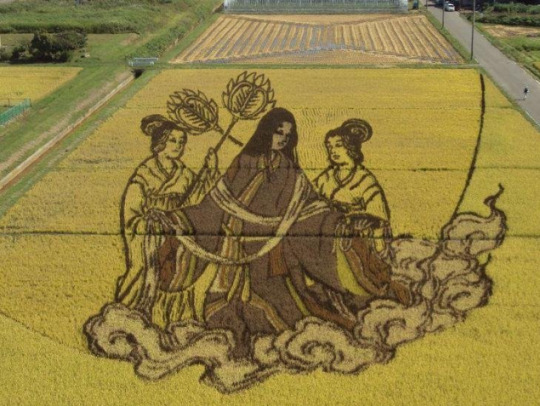

Shiroyone Senmaida
Famous for its 1,000 rice field terraces that descend to the sea, Shiroyone Senmaida is an incredibly beautiful and picturesque spot to behold, and location to explore. Shiroyone Senmaida was awarded a special status by the Food and Agriculture Organization of the United Nations for being a place of such scenic beauty. Between April and July, you can see beautiful sunsets, green fields, and stunning reflections in the sea and flooded paddies. In autumn, it is known for its amazing golden colours. And at night, the terraces are illuminated by 21,000 LED lights. The wider area is known for being excellent for walking, hiking and cycling too. Like many of Japan’s stunning rice field terraces, Shiroyone Senmaida attracts huge numbers of photographers.
Hoshitoge Rice Terraces
Located in Niigata Prefecture, Hoshitoge no Tanada is regarded as one of Japan’s most beautiful villages and rice terraces. It’s fields, featuring more than 200 terraces, are arguably the prettiest in all of Japan, especially when the mist rolls in over the water-filled paddies in Autumn.
Hamanoura Senmaida
Overlooking the ocean, you’ll find these stunning rice fields in Saga Prefecture. They say the best time to visit Hamanoura Senmaida is at sunset when the rice fields, terraces and paddies are tinted with a golden orange glow as the sun goes down over the ocean
Oyama Senmaida
One of the many reasons to recommend Oyama Senmaida is because of its proximity to Tokyo. It is the closest to the capital so if you’re visiting Tokyo and you don’t have time to venture around the whole country, this could be the rice field terrace to see first-hand. It’s also undeniably beautiful especially when the terraces fill up with rainwater during the Tsuyu (plum rain) season.
Maruyama Senmaida
A picturesque and majestic rice field terrace set on a 160km slope, Maruyama Senmaida features views of seven hectares of land. It is considered to have one of the best views of all Japan’s rice terraces (as seen in our main banner image) because of its steep incline. In the summer months at night, you can also see fireflies dancing over the fields. A stunning sight! Fireflies symbolise summer in Japan and there are several festivals and events to celebrate them. If you’re intrigued, you could try Fussa Firefly Festival at Fussa City, which is on the outer edge of Tokyo. There are stalls selling food and drink, special events and activities, and most importantly more than 500 fireflies flying around overhead.
Havard referencing:
0 notes
Photo

PAKHALA DIVAS: 2023 Wishing each and everyone out there a very HAPPY VISWA PAKHALA DIVAS in advance.. it’s on 20th of March, but I’m celebrating it with my family and Conosh on 19th of March which is a Sunday. Booking Link is available in my stories and my bio.. Pakhala is not only a dish but emotion for all Odias around the world. We Odias are very proud of our rich heritage and culture, we all know how food is an integral part of our culture. Making around 15- 16 vegetarian and 5 non vegetarian dishes in total to along with the Pakhala. I am making Dahi Chhunka Pakhala which is basically cooked rice soaked in water, tempered with Cumin, mustard seeds and fennel seed along with crushed ginger, chillies, curry leaves and raw mangoes (amba kasi) and added curd and slices of lemon on top. Pakhala will be served with various side dishes called BHAJA-CHHANA, TARKARI , PODA-JALA and PAGAW-BHARTA-CHATUNI and to finish off this meal on a sweet note .. there is something in the MITHA - PITHA too.. So here’s the spread. PAKHALA TUNGI Chhunka Dahi Pakhala Chunka Torani Saga Badam Kharada Cheki Pariba Bhaja Gota Kalara Bhaja Chhuin Aloo Besara Butadali Pakudi Kancha Amba chatuni Baigana Poda Tomato Poda Pagaw Badichura Aloo chakata Phula Badi Bhaja Chenachur Kakudi, piaja, kanchalanka Homemade Koli Aachar Podo Pitha Malpua Add Ons: Mutton Bhaja Chingudi Machhaw Chhecha Chuna Machhaw Khatta Mitha Chadchadi Masala Machhaw Bhaja Bihana Bara Podo Pitha Malpua Indulge yourself with some soulful Odia’s favourite lunch by booking through the link given in my bio.. in my stories and can even DM me if there’s any queries.. (at RBD Stillwaters) https://www.instagram.com/p/Cp4-xa-P7eA/?igshid=NGJjMDIxMWI=
0 notes
Note
Steph: so you know Dick?
Jason: I do...
Steph: I had another Incident
Jason: ?
Steph: With the, yknow, the Stuff
Jason: is that what we’re calling it now?
Steph: ANYWAY. I was half asleep and trying to make waffles and boil water at the same time and I kind of mixed up the ingredients
Jason: oh no
Steph: oh yes. Watery waffles and milky rice
Jason: I am at a loss for words
Steph: I’m pretty sure this is how you make rice pudding
Jason: are you gonna eat it?
Steph: of course not. Why do that when Dick will eat it for me?
Jason: I like the way you think
Steph: I know
.
209 notes
·
View notes
Text
Saturday, December 10, 2022
The $42 Billion Question: Why Aren’t Savers Ditching Big Banks?
(WSJ) Americans are missing out on billions of dollars in interest by keeping their savings at the biggest U.S. banks. The Federal Reserve has raised interest rates to their highest level since early 2008, yet the biggest commercial banks are still paying peanuts to savers. WSJ’s Dion Rabouin reports that savers could have earned $42 billion more in interest in the third quarter if they moved their money out of the five largest U.S. banks by deposits to the five highest-yield savings accounts—none of which are offered by the big banks.
Griner freed: WNBA star swapped for Russian
(AP) American basketball star Brittney Griner headed home Thursday night, freed from Russian prison in exchange for the U.S. releasing notorious Russian arms dealer Viktor Bout in the culmination of an eight-month saga of high diplomacy and dashed hopes. But the U.S. failed to win freedom for another American, Paul Whelan, jailed in Russia for nearly four years. The deal, the second in eight months amid tensions over Russia’s invasion of Ukraine, secured the release of the most prominent American detained abroad and achieved a top goal for President Joe Biden. Yet it carried what U.S. officials conceded was a heavy price.
UN aid chief: Gangs control about 60% of Haiti’s capital
(AP) Close to 60% of Haiti’s capital is dominated by gangs whose violence and sexual attacks have caused thousands to flee their homes, the U.N. humanitarian chief in the Caribbean nation said Thursday. Ulrika Richardson said that has left nearly 20,000 people in the capital facing “catastrophic famine-like conditions” as a cholera outbreak spreads throughout Haiti. Richardson painted a grim picture of a country in a downward spiral, with half its population in urgent need of food assistance as the number of cholera deaths has risen to 283. She said close to 12,000 people have been hospitalized with the disease since Oct. 2, and there are now a total of more than 14,000 suspected cholera cases in eight of the country’s 10 regions. She said all but 1,000 of the 20,000 Haitians facing starvation are in the capital, Port-au-Prince, mainly in the Cite Soleil slum controlled by the gangs. Richardson said insecurity has led to “massive displacement,” especially in the capital, where 155,000 people have fled their homes.
Chronic malnutrition stalks many poor children in Ecuador
(AP) Sara Milena is barely 20 days old. Her mother, Tania Herrera, lives with her parents, who are the breadwinners of an Ecuadorian household where they earn $5 to $7 a day to feed five adults and support the new arrival. That income is stretched in hopes of feeding the adults twice a day: coffee with bread, when there is any, in the morning and a plate of rice at night, or maybe not. Erwin Ronquillo, secretary of the government program Ecuador Grows Without Malnutrition, said child malnutrition is chronic among Ecuador’s 18 million inhabitants. It is seen everywhere, but hits hardest in rural areas and among the country’s Indigenous peoples, he said. Ecuador has the second highest rate of chronic child malnutrition in Latin America, after Guatemala. According to the United Nations Children’s Fund, one in three Ecuadorian children suffers from malnutrition. Of those, 40.7% are Indigenous, though Indigenous make up only 7% of the population. In just over a fifth of the malnutrition cases, learning is affected.
After missile strikes, Ukrainians persist without electricity, water, heat
(Washington Post) Russia’s relentless missile campaign targeting Ukraine’s energy systems has knocked out critical services across the country and, as the Kremlin clearly intended, disrupted the lives of ordinary Ukrainians. With freezing temperatures setting in, residents of Kyiv and other cities are not only asking where to find heat, water and electricity but also wondering if they can stay in Ukraine. Officials are warning of a humanitarian catastrophe for those who remain and a new refugee crisis if too many leave. In the meantime, stress is rising, including signs of tension among public officials responsible for making repairs, which are difficult, expensive, and, in some cases, impossible without scarce new equipment. Ukrainian President Volodymyr Zelensky announced the creation of some 4,000 “Points of Invincibility” across the country—shelters where the population could keep warm, charge electrical devices, access the internet and get something warm to drink.
Ukrainian ingenuity is ushering in a new form of warfare at sea
(Economist) On September 21st an odd piece of flotsam washed up on the outskirts of Sevastopol. It was about five and a half metres long and the consensus was that it was a USV (uncrewed surface vessel, essentially a drone boat), possibly on a reconnaissance mission, that had been put together by the ingenious boffins who are to Ukraine what q branch is to James Bond. On October 29th reality bit. A fleet of the things, accompanied by similarly robotic air cover, attacked Sevastopol’s naval base, the home port of Russia’s Black Sea fleet. According to the Ukrainians, and backed up by video footage apparently shot from cameras on board one of the drones, they scored direct hits on Admiral Makarov, the fleet’s flagship, and two other vessels, damaging all three. That was followed on November 18th by a big explosion at a Russian oil terminal in Novorossiysk, also reported to have been the work of the same type of naval drones. “For many it [these attacks] marks the start of a new age in naval warfare,” wrote H.I. Sutton, an author, blogger and naval analyst who has studied footage of the Ukrainian drone boat. That could be bad news not only for Russia, but for anyone who does business, naval or civilian, at sea. For its part, Ukraine announced on November 11th that it plans to build 100 of the vessels, paid for, it hopes, by crowdfunding. In its fundraising materials, Ukraine claims that each boat costs a mere $250,000. A single anti-ship missile, by comparison, can cost millions.
China prepares for exit wave of infections as it relaxes covid policies
(Washington Post) A swirl of hope, fear and resignation has gripped China since the government announced that it was reducing requirements for regular PCR testing, digital health passes and quarantining in centralized facilities for even minor infections—the pillars of the official covid fighting policy. Officials never formally declared an end to “zero covid,” but the new approach suggests the underlying goal has shifted: Like most of the rest of the world, authorities are now primarily concerned with safeguarding vulnerable groups and minimizing the number of deaths and severe cases, rather than trying to stop the virus altogether. But tempering the joy of saying goodbye to sudden lockdowns is concern about an exit wave. A speech by government adviser and former National Health Commission official Feng Zijian in which he predicted that the first wave could see about 60 percent of the population infected was shared widely on Thursday. The lack of natural immunity, combined with low vaccination rates among the elderly and little investment in emergency care, could lead to a surge in severe infections and a high mortality rate.
China’s Xi at Saudi palace to meet royals on Mideast trip
(AP/Foreign Policy) Chinese leader Xi Jinping met on Thursday with Saudi Arabia’s king and crown prince while on a visit to the kingdom, solidifying ties with a region crucial to his country’s energy supplies as sanctions intensify on Russia over its war on Ukraine. It wasn’t immediately clear what Xi focused on in his discussions, though he wrote in a newspaper column published by Al Riyadh newspaper that “exchanges between China and Arab states date back more than 2,000 years.” The column also quoted a saying by Islam’s Prophet Muhammad: “Seek knowledge even if you have to go as far as China.” “The Arab people value independence, oppose external interference, stand up to power politics and high-handedness, and always seek to make progress,” Xi’s column read. He also noted that the Gulf Cooperation Council countries, which include Bahrain, Kuwait, Oman, Qatar, Saudi Arabia and the United Arab Emirates, serve as “an energy tank for world economy.” China, the world’s largest crude oil importer, relies heavily on Saudi oil, paying tens of billions of dollars annually to the kingdom. “Beijing cannot replace Washington on the issue that matters most to the Saudis: their security in a rough neighborhood,” Aaron David Miller argues in Foreign Policy. “But the days of Riyadh’s monogamous marriage with Washington are probably going the way of the dodo.”
South Koreans set to become younger as traditional way of counting age scrapped
(Reuters) South Korea on Thursday passed laws to scrap its traditional method of counting ages and adopt the international standard—a shift which will make its citizens either 1 or 2 years younger on official documents. Koreans are deemed to be a year old when born and a year is added every Jan. 1. This is the age most commonly cited in everyday life. A separate system also exists for conscription purposes or calculating the legal age to drink alcohol and smoke, in which a person’s age is calculated from zero at birth and a year is added on Jan. 1. The confusing array of systems will disappear—at least on official documents—when the new laws that stipulate using only the international method of counting ages take effect in June 2023. Jeong Da-eun, a 29-year-old office worker, is happy about the change, saying she has always had to think twice when asked overseas about her age. “Who wouldn’t welcome getting a year or two younger?” she said.
How Indonesia’s new sex laws will affect tourists
(CNN) International travelers have been flocking back to the popular resort island of Bali as the Covid pandemic subsides, prompting hopes that Indonesia’s battered tourism industry is on the road to recovery. But this week, controversial new laws were passed in parliament that ban cohabitation and sex outside marriage. The laws will apply not just to residents but also to foreign expats and tourists in the country—raising concerns from experts. Although the changes are not expected to kick in for at least another three years, industry players tell CNN that the new criminal code could put foreigners off visiting and hurt the country’s global reputation, starving it of vital tourism revenues. Under the new criminal code, anyone—Indonesians or foreigners—found guilty of adultery or premarital relations could face 12 months in jail. It’s not yet clear how these laws will be enforced. “Do tourist couples (visiting Bali) have to prove that they are married? Should we be asking them if they are married or not?” wonders one tourism official.
United Arab Emirates ranked as having the best passport in the world
(CNBC) The United Arab Emirates is ranked as the world’s number one passport to hold in terms of mobility and freedom from travel restrictions, according to the latest publication of the Passport Index, a global ranking by Montreal-based citizenship financial advisory firm Arton Capital. The UAE, a small, oil-rich Gulf sheikhdom of about 10 million people—some 90% of whom are foreign expats—has beaten the likes of Germany, Sweden, Finland and Luxembourg in the latest ranking, though those countries are all in the top five. Essentially, if you’re an Emirati passport holder, you can travel to a huge number of countries visa-free, and in many others you can get a visa right when you arrive. Emirati passport holders can enter 121 countries without a visa, and get a visa on arrival in a further 59 states. They need a visa for just 19 countries.
Oldest Known DNA Offers Glimpse of a Once-Lush Arctic
(NYT) In the permafrost at the northern edge of Greenland, scientists have discovered the oldest known fragments of DNA, offering an extraordinary look at an extraordinary ancient ecosystem. The samples, described on Wednesday in the journal Nature, came from more than 135 different species. Together, they show that a region just 600 miles from the North Pole was once covered by a forest of poplar and birch trees inhabited by mastodons. The forests were also home to caribou and Arctic hares. And the warm coastal waters were filled with horseshoe crabs, a species that today cannot be found any farther north of Maine.
1 note
·
View note
Text
beppu and mt. aso
The weekend before last I went on a trip to Oita and Kumamoto prefectures in eastern Kyushu. Here’s a map for reference:

We first drove about two hours east across Saga and southern Fukuoka and made a stop in Hita, Oita prefecture on our way to Beppu.
Hita is the hometown of the manga creator Hajime Isayama, who created the famous manga Attack on Titan. At Hita Station, you can find a statue of the character Levi as well as some other Attack on Titan figures.

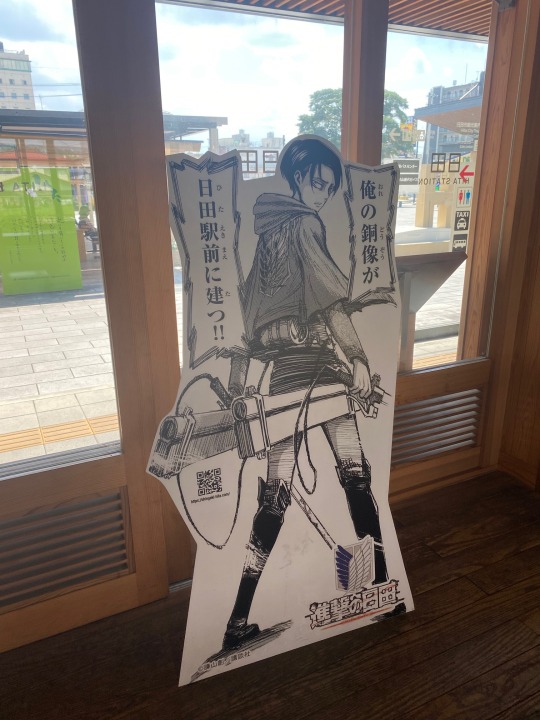

Hita station also had this cute sign where you can place yourself as the “I” in HITA. Behind the display it says “’I’ and ‘Love (Ai)’ is the same sound in Japanese. Your love makes HITA be completed.” It was so cute.


Hita station was a really lovely station with a nice atmosphere. We got ice cream and cold drinks and enjoyed the shade before continuing on.

Next we stopped by the Oyama Dam, which has a famous statue of Eren, Mikasa, and Armin from Attack on Titan. The statue shows them looking up in horror at the dam, referencing the show in which they stare up at a titan tearing down the walls of their city. It looks incredible and as a fan of the manga, it was really cool to experience the feeling they did looking upon that huge wall. We also went to the top and experienced the other perspective: looking down on the small humans from the towering wall. Some people were above while we were down below and we yelled greetings to each other and lines from the show like “I WILL KILL ALL TITANS!” It was really funny.


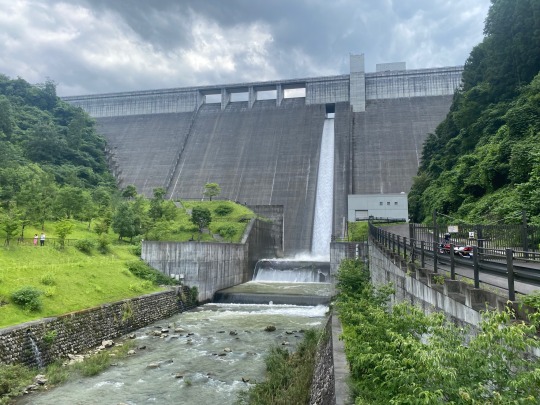




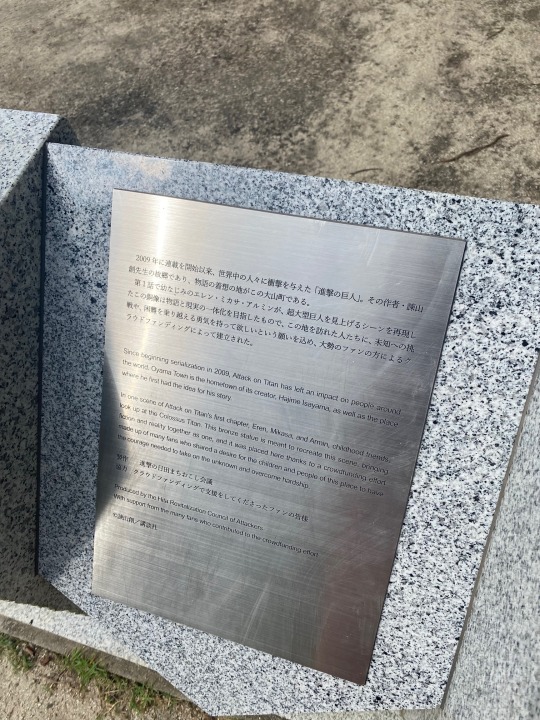
From there we continued our road trip on to Beppu. The scenery of Oita was very lush and filled with mountains, so the drive was really beautiful.

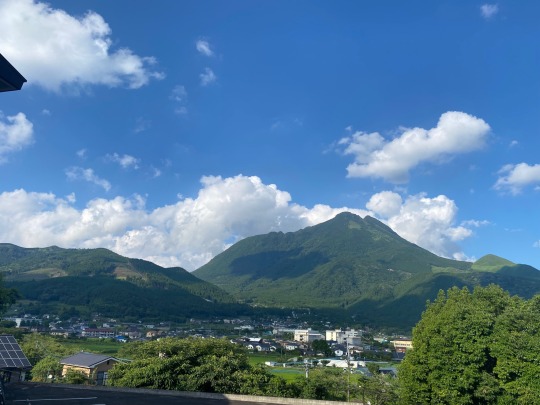

We arrived at our hotel in the city of Yufuin to the west of Beppu and checked in. The hotel was small and in traditional style, so all seven of us slept in the same room on futon mattresses. Our Japanese friend that came with us said it reminded her of school trips in middle school and high school. It was really fun and felt like a big sleepover.

After this we grabbed dinner at a small local restaurant called Siesta. I ordered bibimbap, a Korean dish with rice and vegetables. I also ordered kabosu juice with honey. Oita is famous for kabosu, a kind of small lime. It was super refreshing.


Here’s what a kabosu looks like for reference.

Fun fact: I googled kabosu to find a picture and learned that the famous shiba inu dog from the doge meme was named Kabosu because of her round face. So kabosu. Much round.

Anyway, we returned to the hotel and all headed down to the onsen, or hot spring. Beppu and Yufuin are famous hot spring destinations due to their geothermal activity. It was a small spring, but the water was hot and relaxing after a day on the road. The hotel also had free-to-use retro massage chairs, so we enjoyed a nice mechanical massage after our dip in the onsen.
The next day we ate breakfast on the hotel’s back patio and enjoyed the view of Mt. Yufu. There were many frogs around the hotel and the hot springs, which were super cute.


Next we loaded into the cars and headed to the Umitamago Aquarium in Beppu. Umitamago means “sea egg,” so they had a big sign out front of a large egg.

We spent time looking at all the fish and watched dolphin and walrus shows. In between the dolphin shows we played with the dolphins a bit. One of the dolphins used its head to throw a basketball out of its tank and we threw the ball back in for her again. We continued on like this for an entertaining 30 minutes.

Next we moved on to the Beppu Hells. Like Unzen, Beppu has geothermal pools called Hells which are famous tourist spots. There are seven Hells across Beppu, each with unique traits such as different colors or textures. Unfortunately we stayed at the aquarium a bit too long and were only able to visit two of the Hells before they closed for the day: Umi Jigoku and Chi no Ike Jigoku.
Umi Jigoku, “Sea Hell,” was a bright blue pool named for its resemblance to the blue sea.

There was a basket of eggs boiling in the water and you could buy them as a snack. It was super tasty.

Behind Umi Jigoku was a small Inari Shrine, so we walked up and paid our respects there as well.


Next, we went to Chi no Ike Jigoku, “Lake of Blood Hell.” This Hell was a red color, resembling a lake of blood. The chemical compounds of ferrous oxide, magnesium oxide, calcium oxide, and silicic acid give it its red color. The mineral-rich water from the pool can be used to make various ointments for treating skin diseases. It can also be used for dyeing cloth. It was definitely kind of spooky-looking, but very cool.

After this, we went to a Round 1 arcade in Oita City for a night of fun and games. We played rhythm games, UFO catchers, and bowling. It was a ton of fun. The Round 1 was huge and you could look out onto the UFO catcher floor from the second level and watch everyone throw their money away in real time. I stayed away from the UFO catchers this time, remembering the $30 I blew getting my stuffed horse in Sasebo. I decided to stick to rhythm games this time.

The final day we checked out of the hotel and loaded up the cars. One car split off to go home, and the remaining four of us drove another 2 hours southwest into Kumamoto prefecture to see Mt. Aso.
On our way we saw very beautiful scenery of the mountains and plains of Kumamoto. We also passed a field of cows and stopped to say hello. Milk and beef is very common in Japan, but I have never seen cows anywhere so I had been wondering where they were keeping them. Kumamoto is also famous for dishes containing horse meat (a little hard to hear, I know), so there were some horses around as well.

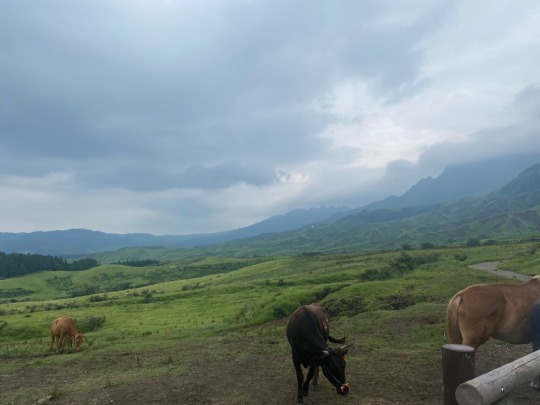
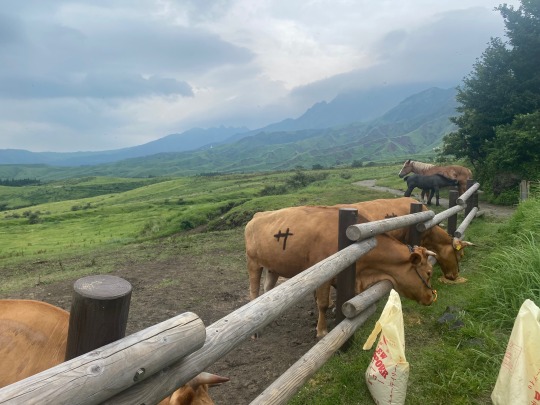
Next we continued on to Mt. Aso. Mt. Aso is the largest active volcano in Japan and one of the largest in the world. It’s peak stands 1592 meters tall and its largest caldera has a circumference of 71 miles. If you play Pokemon, it was the inspiration for Mt. Chimney in Pokemon Ruby and Sapphire.
Unfortunately due to recent volcanic activity, we were unable to go up to the crater, and instead enjoyed the view of the volcano from below. There was a wide plain around the peak and we climbed up a small hill to admire the volcano. The wide plains reminded me of Howl’s Moving Castle and there were so beautiful and serene. Since Kumamoto is famous for horses, they had horse riding along the plain as well.

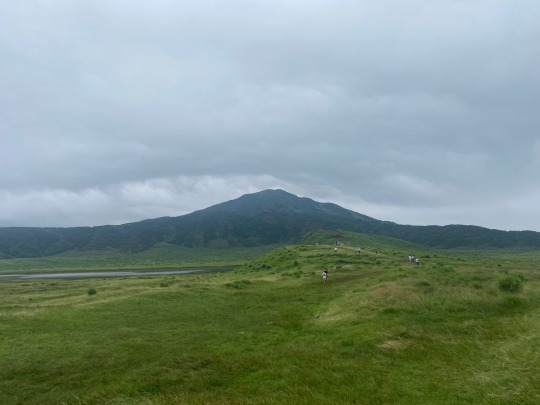
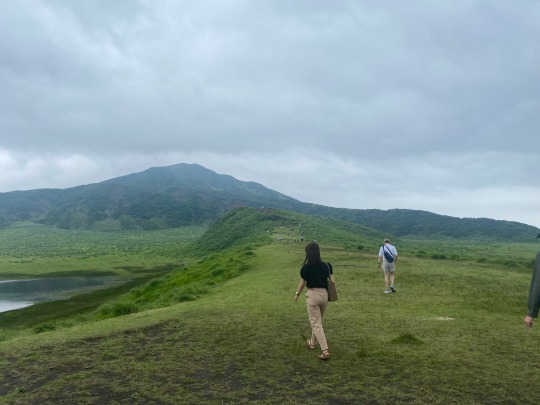

We got lunch at a small shop near the visitor center. I was blasphemous and ordered a local dish served with Basashi (raw horse sashimi) on the side. I was curious about how it tasted and it was actually pretty good. I’m a horse girl at heart so I will never order it again, but I was curious about the experience and had to try it once. The soup served with the dish had local vegetables including a kind of mustard leaf and it was really tasty.

After lunch we stopped for Aso Milk soft ice cream and it was some of the tastiest ice cream I’ve ever had. Aso cows make some tasty milk!

From there we decided to head home. It would be a bit far to drive north around the bay back to Nagasaki, so we decided to take the ferry across the bay to the Unzen peninsula to cut our driving down to just 2 hours.
We drove onto the ferry boat with the other cars. Once we left port we were allowed to leave the cars and hang out in the main cabin or along the railing while we sailed. I’ve never taken a car on a ferry before, so it was a cool experience.





After leaving the ferry it was only one hour more to return to Omura. This trip was really relaxing and a lot of fun! Summer vacation just started for schools in Omura and school is out for students. I still have to work at the Board of Education office during this next month, but I hope to make many more fun memories this summer before school starts again!
0 notes
Text
🧛🏻♀️ 𝖁𝖆𝖒𝖕𝖎𝖗𝖊 𝕸𝖊𝖉𝖎𝖆 𝕸𝖆𝖘𝖙𝖊𝖗𝖑𝖎𝖘𝖙 🧛🏻♀️
🎟 Movies 🎟
Afflicted (2014)
Bakjwi (2009)
Beverly Hills Vamp (1988)
Blade (1988)
Blade II (2002)
Bordello of Blood (1996)
Bram Stoker’s Dracula (1992)
Byzantium (2012)
Captain Kronos – Vampire Hunter (1974)
Carmilla (2019)
Cirque du Freak: The Vampire's Assistant (2009)
Countess Dracula (1971)
Cronos (1993)
Crypt of the Vampire (1964)
Dark Shadows (2012)
Daughters of Darkness (1971)
Dracula (1958)
Dracula (1979)
Dracula 2000 (2000)
Dracula Has Risen From the Grave (1969)
Fright Night (1985)
Fright Night (2011)
From Dusk ‘Til Dawn (1996)
Grave of the Vampire (1972)
Hotel Translvania 1, 2 & 3 (2012, 2015 & 2018
Incense for the Damned (1971)
Interview With the Vampire (1994)
Isle of the Dead (1945)
La Noche de Walpurgis (1971)
Le Frisson des Vampires (1971)
Lesbian Vampire Killers (2009)
Les Deux Orphelines Vampires (1997)
Let the Right One In (2008)
Lèvres de Sang (1975)
Love Bites (1993)
Lust for a Vampire (1971)
Near Dark (1987)
Nosferatu: Phantom der Nacht (1979)
Nosferatu (1922)
Only Lovers Left Alive (2013)
Requiem pour un Vampire (1971)
Stake Land (2011)
Suck (2009)
The Brides of Dracula (1960)
The Hunger (1983)
The Kiss of the Vampire (1963)
The Lost Boys (1987)
The Night Stalker (1972)
The Twilight Saga (2008 - 2012)
The Vampire Lovers (1970)
Thirst (2009)
Vamp (1986)
Vampire's Kiss (1988)
Vampire (1979)
Vampire Academy (2014)
Vampire Circus (1972)
Vampire in Brooklyn (1995)
Vampires: Los Muertos (2002)
Vampires (1988)
Vampires Suck (2010)
Vampyr (1932)
Vampyros Lesbos (1971)
What We Do In the Shadows (2014)
Yakuza Apocalypse (2015)
📖 Books (Stand Alone) 📖
'Salem's Lot by Stephen King
After Ninety Years by Milovan Glišić
Beren and Lúthien by J.R.R Tolkien
Bewitched by Edith Wharton.
Blood Oath by Christopher Farnsworth
Captive by Gabrielle Estres.
Carmilla by Sheridan Le Fanu.
Carpe Jugulum by Terry Pratchett
Children of the Night by Robert E. Howard
Dracula by Bram Stoker
Dracula in Love by Karen Essex
Empire V by Victor Pelevin
Fangland by John Marks
Fevre Dream by George R. R. Martin
Fledgling by Octavia Butler
For the Blood is the Life by F. Marion Crawford
Fragment of a Novel by Lord Byron
Hematoma by Matteo Polk
I Am Legend by Richard Matheson
Interview with the Vampire by Anne Rice
Knight of the Black Rose by James Lowder
Lady Christina by Mircea Eliade
La Femme Immortelle (The Immortal Woman) by Pierre Alexis de Ponson du Terrail
La Jeune Vampire by J.-H. Rosny Aîné
La Morte Amoureuse by Théophile Gautier
La Vampire (The Vampire Countess) by Paul Féval
La Ville Vampire (Vampire City) by Paul Féval
Le Chevalier Ténèbre (Knightshade) by Paul Féval
Let the Right One In by John Ajvide Lindqvist
Lilith by George MacDonald
Lost Souls by Poppy Z. Brite
Manor by Karl Heinrich Ulrichs
Modern Marvels – Viktoriana by Wayne Reinagel
NOS4A2 by Joe Hill
Oil and Water by Lara Ann Dominick
Origin of the Vampyre, by P. J. Parker
Pages from a Young Girl's Journal by Robert Aickman
Popsy by Stephen King
Renfield: Slave of Dracula by Barbara Hambly
Revelations in Black by Carl Jacobi
Romeo and Juliet and Vampires by Claudia Gabel
Song of The Nephilim, by D. Finica.
Stray Witch by Eva Alton
Sunshine by Robin McKinley
The Blood of the Vampire by Florence Marryat
The Bloody Chamber and Other Stories by Angela Carter
The Bride of Corinth by Robert Southey
The Dark Castle by Marion Brandon
The Dark Tower V: Wolves of the Calla by Stephen King
The Dark Tower VII: The Dark Tower by Stephen King
The Delicate Dependency: A Novel of the Vampire Life by Michael Talbot
The Dragon Waiting by John M. Ford
The Family of the Vourdalak by Count Alexis Tolstoy
The Fate of Madame Cabanel by Eliza Lynn Linton
The Girl with the Hungry Eyes by Fritz Leiber
The Hills of the Dead by Robert E. Howard
The Historian by Elizabeth Kostova
The House of the Vampire by George Sylvester Viereck
The Hunger by Whitley Strieber
The Journal of Edwin Underhill by Peter Tonkin
The Keep by F. Paul Wilson
The Lair of the White Worm by Bram Stoker
The Light at the End by John Skipp and Craig Spector
The Little Sisters of Eluria by Stephen King
The Longest Night by Ray Russell
The Night Flier by Stephen King
The Night Stalker by Jeff Rice
The Pale Lady by Alexandre Dumas
The Room in the Tower by E.F. Benson.
The Silmarillion by J.R.R. Tolkien
The Silver Kiss by Annette Curtis Klause
The Silver Kiss by by Annette Curtis Klause
The Stress of Her Regard by Tim Powers
The Tomb of Sarah by F. G. Loring
The True Story of the Vampire by Count Stanislaus Eric Stenbock
The Vampire by Jan Neruda
The Vampyr by John William Polidori
The Vampyre of Gotham by Lev Raphael
They Thirst by Robert McCammon
Those Who Hunt the Night/Immortal Blood by Barbara Hambly
Travelling with the Dead by Barbara Hambly
Vampire's Moon by Peter Saxon
Vampire$ by John Steakley
Vampire by Vladimir Dal
Vampire of the Mists by Christie Golden
Vampireology by Nicky Raven & Dugald Steer
Vampires Overhead by Alan Hyder
Varney the Vampire by James Malcolm Rymer
Vlad, the last confession by Chris Humphreys.
Wampir ("The Vampire") by Władysław Reymont.
With the People from the Bridge by Dimitris Lyacos
📚 Books (Series) 📚
Anno Dracula Series by Kim Newman (Book 1: Anno Dracula)
Blood Books by Tanya Huff (Book 1: Blood Price)
Dark-Hunter by Sherrilyn Kenyon (Book 1: Dark Hunters)
Eternal Night: A Vampire Romance Collection by K. L. Bone (Book 1: Forever Chosen)
Hollows Series by Kim Harrison (Book 1: Dead Witch Walking)
House of Night by P. C. Cast (Book 1: Marked)
Scarlet Cherie: Vampire Series by Ayshen Irfan (Book 1: The Fire Within My Heart)
The Anita Blake: Vampire Hunter Series by Laurell K. Hamilton (Book 1: Guilty Pleasures)
The Dresden Files by Jim Butcher (Book 1: Storm Front)
The Mortal Instruments by Cassandra Claire (Book 1: City of Bones)
The Paranormal Detective Series by Lily Luchesi (Book 1: Stake-Out)
The Saga of Darren Shan by Darren Shan (Book 1: Cirque Du Freak)
The Southern Vampire Mysteries by Charlane Harris (Book 1: Dead Until Dark)
The Twilight Saga by Stephanie Meyer (Book 1: Twilight)
The Vampire Academy by Richelle Mead (Book 1: Vampire Academy)
The Vampire Chronicles by Anne Rice (Book 1: Interview With the Vampire)
The Vampire Diaries by L. J. Smith (Book 1: The Awakening)
Undead by Maryjanice Davidison (Book 1: Undead and Unwed)
Vampire Earth by E. E Knight (Book 1: Way of the Wolf)
🎬 TV Shows 🎬
Angel
Becoming Human
Being Human
Blade: The Series
Blood Ties
Buffy the Vampire Slayer
Dark Shadows
Dracula
Forever Knight
From Dusk ‘Til Dawn: The Series
Hemlock Grove
Imortal
La Luna Sangre
Lobo
Mona the Vampire
Moonlight
Penny Dreadful
Salems’ Lot
The Originals
The Vampire Detective
The Vampire Diaries
The Vampyr: A Soap Opera
True Blood
What We Do In The Shadows
Young Dracula
#vampire#vampires#vampyr#goth#gothic#vampire girl#vampirecore#vampire goth#vampire aesthetic#vampirism#vampire boyfriend#vampire books#vampire bite#vampire fiction#vampire film#vampire fantasy#twilight#interview with the vampire#the vampire diaries#tvd#anita blake#vampire community#vampire coven#vampire culture#vampire comic#vampire chronicles#vampire characters#vampire diaries#media#master list
5K notes
·
View notes
Text
I’ve been thinking about how Frank Herbert’s biography weaves together with the history of the Pacific Northwest in a way that has interesting implications for readings of the Dune series.
Herbert grew up in Tacoma and became a reporter around different parts of Washington when he graduated high school. The Grand Coulee Dam was constructed by the wartime US government as a massive investment from 1933-1942, when he was between 13 and 22. The dam was sold to the Northwest as a means of irrigating the desert of the Columbia Plateau and effecting an agricultural and population boom of that arid region, which did happen, but from the US government’s perspective, the primary use for the dam after its ‘42 opening was as an enormous power generator used for vehicle and munitions industries for the war, and even for the Manhattan Project. Herbert’s childhood eastern Washington would have been a desert where a few fiercely independent farmers and ranchers struggled to make a living. By the time of his writing career it had transformed into a green agricultural region dominated by crop conglomerates subsidized by and dependent on water from government projects. The damming of the Columbia brought a certain prosperity to the region, certainly if you measure wealth by access to water and growth of green crops, which is one of the more valid ways to; but it cut off the salmon run, ending the presence of a keystone species that was the basis not just for the region’s ecology but for both indigenous and settler cultures centuries old.


Fig. 1: Two different eco-engineering projects on two different planets
One of the running plots of the entire Dune saga is how the Atreides Empire sped along the terraforming of Arrakis, greening it with captured water, as a promise to the Fremen in exchange for their loyalty in war. But this alliance destroyed much of the ancient Fremen way of life, which was tied to the planet’s ecology, and especially to the sandworms, a unique keystone species which would ultimately be driven to near-extinction by the Imperial mass-irrigation effort – just like Columbia salmon. Long-standing and ecologically rooted traditional ways in both cases were utterly changed due to an outside power (be it from Caladan or Washington D.C.) making a formerly wayward place a central powerhouse in order to wage war, and selling the transformation to the populace with fulfilled promises of life-giving water where it was in scarcity.

Fig. 2: This is basically the same thing, right? On the left, Chinook fishermen at Celilo falls, otherwise known for 15,000 years as the salmon fishing ground of Wyam, the oldest continually inhabited place in North America, before the falls were drowned by the reservoir of Dalles Dam; on the right, Fremen capture and ride Shai-Hulud in the deep desert of Dune, before such large hydrophobic worms became rare due to the proliferation of water across the planet.
How much of this is intentional allegory? Honestly, I have no clue. Correlation isn’t necessarily intent. Herbert said that dunes on the Oregon coast - not the Columbia Plateau - inspired Arrakis, so there’s a point against the theory. And the whole application of allegory for the Middle East, that shouldn’t be dismissed in favour of localism. Even still, it seems likely that Herbert growing up with the transformation of his home region must have influenced his worldview and therefore his fiction. Science fiction is a reflection of our world, and even in a global society, where we live is how we see our world.

Fig. 3: The transforming Pacific Northwest without and with the additional influence of Edgar Rice Burroughs and unspecified but probably large amounts of psilocybin
Anyway, I thought Timothee Chalamet was great as Franklin Delano Roosevelt
#dune#dune messiah#children of dune#dune series#frank herbert#pacific northwest#ecology#washington state#oregon#pnw#cascadia#columbia river#columbia#dune spoilers#science fiction#scifi#sci fi#books#literature#salmon#sandworm
50 notes
·
View notes
Link
BY MICHAEL J. MOONEY | PHOTOGRAPHS BY DAVE SHAFER
Staring at the front of the Royal Theater, I feel as though I’m looking backward through time. Taking in the cerulean marquee, the painted red fringe around the box office, the vertical ROYAL sign jutting into the afternoon sky—it’s easy to imagine why the denizens of Archer County flocked here for decades. The theater was a dark, cool respite from the blazing sun, a still escape from the whipping winds of the North Central Plains, a glimpse of entertainment from the outside world.
The theater—or what’s left of it anyway—peers out from the northeast corner of the town square. Without the storied theater, this could be any small town in Texas. Weathered barns and rusted oil pumps dot the landscape. Anchoring the town is the imposing three-story Romanesque Revival county courthouse, with stone archways and provincial peaks. There’s also a small café (Murn’s), a blink-and-you’ll-miss-it police station, a few antiques stores, and a single four-way stoplight swaying in the breeze like an apparition.
The Royal Theater as it is now and as it was then.

This isn’t just any small town in Texas, though. Archer City is the Texas small town. It’s the setting of both the novel and film versions of The Last Picture Show, a coming-of-age story rendered in black and white that earned eight Academy Award nominations, including Best Writing (Adapted Screenplay), Best Directing, and Best Picture. In Larry McMurtry’s book, published in 1966, the town is called Thalia. In the movie, directed by Peter Bogdanovich and released in 1971, it’s called Anarene—a name taken from an abandoned town 8 miles away. But rest assured, both places are Archer City: the looming courthouse, the blinking stoplight, and the Royal Theater, where so many of the most dramatic moments of The Last Picture Show take place.
The novel, which McMurtry called a “spiteful” book intended to “lance some of the poisons of small-town life,” received critical acclaim when it was published. But it was Bogdanovich’s film that truly introduced the entire world, in utterly unromanticized fashion, to the intense, sweeping sagas of everyday life in Archer City. The Last Picture Show turned this particular and peculiar town into art.
Both the novel and movie contain language that was considered lewd at the time. McMurtry’s own mother, Hazel, once said that after reading the first 100 pages she hid the book in the closet and called her son that night. “Larry, honey,” she said to him, he revealed in his 2002 travel memoir Paradise, “is this what we’re sending you to Rice for? Those awful words!”
The film, with its nudity and frank depiction of teenage sexuality—including Cybill Shepherd’s first and only topless scene—absolutely scandalized upright, moral Americans all over the country. Nowhere more so than in Archer City, where it was regarded at the time as a “dirty” movie.
Now, 50 years after the film’s release, the town’s past dalliances with Hollywood are somehow simultaneously scuttled and omnipresent. There’s no billboard at the city limit announcing the place’s cultural significance, no notation on the water tower. But there are echoes of the art formed here, about this place, along every street, around every corner. Some might even feel the spirit of McMurtry, who passed away in Archer City earlier this year.

Over the last five decades, Peter Bogdanovich, a New Yorker who operated in Los Angeles, has told the story of the movie’s origin many times. He’d seen the novel in a store, liked the title, saw what it was about, and immediately put the book back down. Then actor Sal Mineo, who’d starred alongside James Dean and Natalie Wood in Rebel Without a Cause, gave Bogdanovich a copy of the novel, saying he thought it would make a good film. Bogdanovich still didn’t read it, but gave it to his wife, production designer Polly Platt, and asked her to read it. When she inspired him to finally read it himself, he was intrigued by the challenge of conveying small-town life in Texas and eventually co-wrote the screenplay with McMurtry. Bogdanovich, Platt, and McMurtry took a long road trip scouting locations in Texas, but ultimately the director realized he wanted to shoot the movie in McMurtry’s hometown.
Set in the early 1950s, the story follows three teenagers—the co-captains of the football team and the so-called prettiest girl in school—through their senior year of high school, as they each struggle to make sense of adult concepts like love and sex and the fragility of human life. Sonny Crawford is the sensitive, thoughtful boy from a broken home. Duane Jackson is Sonny’s lovelorn best friend who escapes first into the oil fields and then the Korean War. Jacy Farrow is the coquettish rich girl who yearns wholeheartedly for something beyond the confines of her surroundings. The Last Picture Show also famously includes an ensemble of carefully rendered adults trying to cope with their own expired dreams and broken lives.
McMurtry repeated over the years that the characters he created weren’t based on any real-life individuals, but the people of Archer City always suspected otherwise. A man named Bobby Stubbs, who was photographed with McMurtry in their high school yearbook, believed he was the inspiration for Sonny. Stubbs had a troubled home life and worked nights like Sonny, and he drove the same kind of pickup truck. He was also once hit in the eye by the boyfriend of a girl he liked. “It kinda pretty closely followed me,” Stubbs used to say.
A woman named Ceil Cleveland Footlick was often asked if she was the inspiration for Jacy. She was “very good friends” (her words) with Stubbs and had been voted “Most Beautiful Girl” in her class. For years she brushed off the question, but in 1997 she published a memoir with the title Whatever Happened to Jacy Farrow?
Because of the book’s reputation, getting actors to audition was a challenge. Randy Quaid was cast as Lester, an awkward, sleazy suitor of Jacy’s. He’d only read the parts of the script that involved his character, which mostly centered on Lester taking Jacy to a naked swimming party. “I just thought it was going to be like this B-movie, teenage, soft-porn movie,” Quaid would later say. “Something you’d see at the drive-in.”
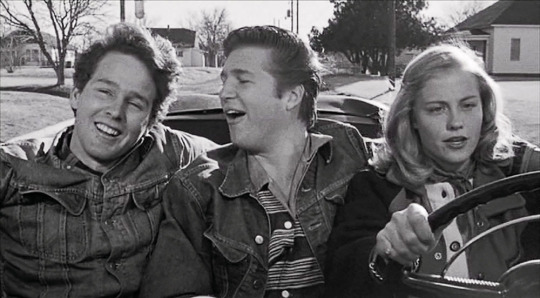
None of the young stars had much experience in film. Timothy Bottoms, who’d only been in one movie before, was cast to play Sonny. Jeff Bridges, cast as Duane, had been a professional actor nearly all his life, but at 21 years old, this would be his first major film role. And Bogdanovich cast Shepherd as Jacy after seeing her face on the cover of Glamour magazine.
Most of the adults in the movie were played by established Hollywood actors, including Cloris Leachman, Ellen Burstyn, and Eileen Brennan. For the role of Sam the Lion, the wisdom-dispensing owner of the town’s pool hall, Bogdanovich cast Ben Johnson, the champion-rodeo-cowboy-turned-stuntman-turned-Western-movie-icon. At first Johnson turned down the part on account of the foul language, but Bogdanovich called in a favor from his director friend John Ford, who convinced Johnson to do it.
Almost as soon as filming started, real life began imitating the art being created. While making a movie about illicit sex and barely veiled scandal, the set was awash in illicit sex and barely veiled scandal. The actors spent a lot of time drinking and smoking together in their hotel rooms 30 minutes north in Wichita Falls, and that led to drama. Bottoms fell in love with Shepherd. Bogdanovich started an affair with Shepherd, dissolving his own marriage while his wife, Platt, continued to work on the movie. (Most mornings Platt styled Shepherd’s hair.) “It was quite a soap opera,” Burstyn said in the documentary Picture This: The Times of Peter Bogdanovich in Archer City, Texas.
This was everything the locals had feared: all the immoral luridness of Hollywood, right here in a part of Texas not so comfortable with unwholesomeness that didn’t stay behind closed doors.
Outside of Archer City, it was a different story. The movie received great reviews from coast to coast. Johnson won the Oscar for Actor in a Supporting Role and Leachman won for Actress in a Supporting Role. The film is still beloved today and maintains a spot in the coveted National Film Registry.
But at the time of its release, most of the locals disapproved. Strongly. The Los Angeles Times ran a story about it with the headline “Movie Riles Town It Depicts.” McMurtry, who was involved in Bogdanovich’s vision, eventually got so annoyed by the vicious gossip in town that he sent a letter to the editor of the Archer City newspaper, challenging anyone in town to a public debate.
His offer went unrequited.

Archer City’s population is 1,848, only a couple hundred larger than it was when McMurtry grew up there in the ’30s and ’40s. The town is the seat of Archer County, created in 1858 by the Texas State Legislature and named after Branch Tanner Archer, former secretary of war of the Republic of Texas. Ranching and oil have long been the predominant industries—by late 1926, there were more than 400 oil wells within 13 miles of Archer City—but many people are increasingly attracted to the town for its proximity to prime hunting.
Many of the locations where The Last Picture Show was filmed are gone now. Where Sam’s dusty pool hall once stood, with its door flapping in the wind, there’s nothing but an empty dirt lot. The Rig-Wam Drive Inn, the burger joint where Jacy dangled french fries over Duane’s head as if he was a trained seal, is just a plot of asphalt and patchy grass. The West-Tex Theater in the neighboring town of Olney, used for the interior movie theater scenes, was torn down in the mid-’80s. Today it’s a small, quiet park with a gazebo.
Some places are still here, but different. The restaurant where Brennan’s character worked turned into Booked Up No. 4, one of four bookstores McMurtry set up around the town square before shuttering all but one in 2012. The high school has some of the same old features, though it’s been updated and decorated with a handful of granite statues marking state titles the school has won through the years.
Much of the town looks and acts remarkably like it did when The Last Picture Show was made. Boys about the age of Duane and Sonny still speed through town in pickup trucks. Men the age of Sam the Lion still stop them to talk about football. The dance hall at the American Legion, where Jacy and Duane twirled around the room and Sonny ran into his estranged father, looks like it could host the same event today. On a recent evening, four or five locals were perched on barstools, sipping cold beers, listening to songs on the jukebox. They got rid of the old Wurlitzer years ago, but the updated digital version there now still plays all the Hank Williams Sr. songs from the movie.
In time, feelings in Archer City softened a bit. Mostly, the people here don’t talk much about the movie, or about McMurtry, the town’s most famous son. You can spend all morning at Murn’s Café and all night at the American Legion, the only bar in town, and never hear The Last Picture Show mentioned once. It’s not the source of tension it once was.
The public change of heart was most apparent in 1989, nearly 20 years after The Last Picture Show was filmed, when Bogdanovich returned to Archer City to shoot the sequel, Texasville, based on a book of the same name by McMurtry. This time the townspeople lined up to participate as extras. People came from miles away to sell concessions or to take photos or just get a glimpse of the nearly $20 million production.
“The bad taste that the movie left for some folks, that’s gone now,” then-high school principal Nat Lunn told the Austin American-Statesman at the time. “Especially with money being short in town, they’re ready for another dose of Hollywood.”
By the late 1980s, the three leads in the first film—Bottoms, Bridges, and Shepherd—had all become stars. While the entire budget for the first movie was around $1.3 million, Shepherd alone was paid $1.5 million to reprise her role. Bridges was reportedly paid $1.75 million. Bottoms, who’d complained publicly about Bogdanovich and said he didn’t like any of his co-stars, would only agree to return if he was given an additional $100,000 to fund the Picture This documentary.
In the two decades since the first movie, Bogdanovich’s career had soared and crashed. He and Shepherd had broken up; he went on to have multiple relationships, and she had two divorces. Bottoms was also divorced and remarried, but on the set he confessed the crush he’d had on Shepherd. Platt returned, too, and brought the 21-year-old daughter she and Bogdanovich shared. It became a grand, twisted Hollywood reunion, right there on the streets of Archer City.
Drawn by the potential spectacle of what was by then some sort of love-octagon, media outlets from across the country sent reporters to town. There were long feature stories in both Entertainment Weekly and the Los Angeles Times. By all accounts, though, the entire production served as a therapeutic experience, healing the wounds of the past. At one press conference, the often-sullen Bottoms hugged Bogdanovich. Behind-the-scenes footage caught Shepherd hugging Bottoms. Residents of Archer County took photos of themselves on the set.
But when the movie was released, it tanked. It received middling reviews, earned back only a fraction of its budget, and even today it’s not easy to find on any of the major streaming services.

A lot of people associated with The Last Picture Show are dead now. Stubbs, who claimed to be the basis for Sonny, died in 1992. Johnson in 1996. Sam Bottoms, the real-life younger brother of Timothy Bottoms who played the mute boy Billy, died in 2008. Platt, the producer and production designer who somehow never pulled Shepherd’s hair, died in 2011. Then Brennan in 2013.
In January of this year, Footlick, the woman who wrote about being the real Jacy Farrow, died in North Carolina. Leachman died almost two weeks later. And on March 25, McMurtry, the writer who created all this beautiful trouble, died at the age of 84.
A few days after his death, nobody answered the doorbell at his house in Archer City, a majestic, three-story mansion just down the road from the high school. Looking through the front window, everything seemed to me to be just the way he left it, from the table made from a giant dinosaur fossil to the towering shelves of books in every room. McMurtry bought this place, the biggest home in town, after he won the Pulitzer Prize for Lonesome Dove. He’d wake up early in the morning, type for an hour and a half or so at his long oak table, then go to the bookstore to price antiquarian volumes. Most of the locals would leave him alone.
On the house’s front porch, a single rocking chair was situated to look out over the front yard into the surrounding neighborhood. Someone sitting there could see the comings and goings of a lot of people. As the early-evening wind moved through, the chair began to rock ever so gently.
These days, I sense the people of Archer City think differently of The Last Picture Show. It’s a part of the town’s story, just like the cattle industry and state titles. The movie is even mentioned on the town’s website, though it’s certainly not prominent.
There’s also a tiny park just off the square with a fiberglass horse covered in brands from local ranches and a display that chronicles a bit of the town’s history. The welded metal wall has separate panels for the town’s founding, the first successful oil well drilled here, and the giant fire that swept through in 1925. There’s also a panel explaining how the town was the filming location for The Last Picture Show and Texasville. Bogdanovich’s last name is misspelled.
A couple hundred feet away is the Royal Theater. Most of the building is a burned-out hull, popular for weddings, photo shoots, and occasional performances. The front of the building has been restored, though. It looks just like it did in the movie, the image that begins and ends the film. It’s haunting and beautiful, weathered and damaged—but still here, still standing, still looking at that single blinking light swaying in the wind.
***
The Last Picture Show wasn’t the first movie based on a novel by Larry McMurtry, and it certainly wasn’t the last. You might besurprised by just how many films and TV shows have been made from his novels. Here are a few:
Hud, 1963 (based on Horseman, Pass By)
The Last Picture Show, 1971
Lovin’ Molly, 1974 (based on Leaving Cheyenne)
Terms of Endearment, 1983
Lonesome Dove, 1989
Texasville, 1990
The Evening Star, 1996
https://texashighways.com/culture/how-the-last-picture-show-changed-the-worlds-view-of-small-town-texas/
24 notes
·
View notes
Text
Priority TBR
I’ve been thinking about how I want to read an entire fantasy and scifi series because I grasp the story better and I am more invested in the world and characters if I spend more time there. So, I will try to do that next year instead of starting unfinished series (also this makes my tbr shorter :D). Except for Discworld because the books kind of stand on their own and can be read whenever I feel like it. For that series I am planning one book a month.
Fantasy:
Tensorate series by Neon Yang
The Queen’s Thief Series by Megan Whalen Turner
Riddle-Master (2 books) by Patricia A. McKillip
Cygnet by Patricia A. McKillip
Winter Rose (2 books) by Patricia A. McKillip
Sevenwaters Series by Juliet Marillier
The Green Bone Saga by Fonda Lee
Earthsea Cycle by Ursula K. Le Guin
Magids Series by Diana Wynne Jones
The Deed of Paksenarrion by Elizabth Moon
Hythrun Chronicles: Wolfblade by Jennifer Fallon
World of the Five Gods by Lois McMaster Bujold
The Memoirs of Lady Trent by Marie Brennan
The Winternight trilogy by Katherine Arden
“Interview with the Vampire” by Anne Rice
“Lonely Castle in the Mirror” by Mizuki Tsujimura
“The Watchmaker of Filigree Street” by Natasha Pulley
“Alphabet of Thorn” by Patricia A. McKillip
“Ombria in Shadow” by Patricia A. McKillip
“Od Magic” by Patricia A. McKillip
“The Book of Atrix Wolfe” by Patricia A. McKillip
“In the Forests of Serre” by Patricia A. McKillip
“The Bell at Sealey Head” by Patricia A. McKillip
“Song for the Basilisk” by Patricia A. McKillip
“The Bards of Bone Plain” by Patricia A. McKillip
“The Tower at Stony Wood by Patricia A. McKillip
“Wonders of the Invisible World” by Patricia A. McKillip
“Dreams of Distant Shores” by Patricia A. McKillip
“Something Rich and Strange” by Patricia A. McKillip
“Tigana” by Guy Gavriel Kay
“Kiki’s Delivery Service” by Eiko Kadono
“The Buried Giant” by Kazuo Ishiguro
Science Fiction:
Xenogenesis by Octavia E. Butler
Patternmaster by Octavia E. Butler
“Fledgling” by Octavia E. Butler
“Bloodchild and Other Stories” by Octavia E. Butler
“Cage of Souls” by Adrian Tchaikovsky
“Cloud Atlas” by David Mitchell
“Moon-Flash” by Patricia A. McKillip
“Kingfisher” by Patricia A. McKillip
“Fool’s Run” by Patricia A. McKillip
“Station Eleven” by Emily St. John Mandel
“The Space Between Worlds” by Micaiah Johnson
“The Stone Sky” by N.K. Jemisin
“Never Let Me Go” by Kazuo Ishiguro
“This is How You Lose the Time War” by Amal El-Mohtar and Max Gladstone
“To the Warm Horizon” by Jin-Young Choi
Classics:
“Middlemarch” by Middlemarch
“North and South” by Elizabeth Gaskell
“Madame Bovary” by Gustave Flaubert
“Wuthering Heights” by Emily Bronte
“Emma” by Jane Austen
“Persuasion” by Jane Austen
“Lady Susan” by Jane Austen
“The Sundial” by Shirley Jackson
“The Bird’s Nest” by Shirley Jackson
“Hangsaman” by Shirley Jackson
“The Road Through the Wall” by Shirley Jackson
“The Lottery and Other Stories” by Shirley Jackson
“The Mayor of Casterbridge” by Thomas Hardy
“Rebecca” by Daphne du Maurier
Contemporary:
“There’s No Such Thing as an Easy Job” by Kikuko Tsumura
“Radio Silence” by Alice Oseman
“Nocturnes” by Kazuo Ishiguro
“The Unconsoled” by Kazuo Ishiguro
“My Grandmother Sends Her Regards and Apologises” by Friedrik Backman
Magical Realism:
“The Chosen and the Beautiful” by Nghi Vo
“A Tale for the Time Being” by Ruth Ozeki
“Earthlings” by Sayaka Murata
“Elatsoe” by Darcie Little Badger
Historical Fiction:
“Affinity” by Sarah Waters
“Tipping the Velvet” by Sarah Waters
“The Thirteenth Tale” by Diane Setterfield
“The Mercies” by Kiran Millwood Hargrave
“Pachinko” by Min Jin Lee
“An Artist of the Floating World” by Kazuo Ishiguro
“The Remains of the Day” by Kazuo Ishiguro
“When we Were Orphans” by Kazuo Ishiguro
Mystery/Thriller:
“Out” by Natsuo Kirino
“The Decagon House Murders” by Yukito Ayatsuji
“The Good Daughter” by Karin Slaughter
Comics/Manga:
Yuureitou by Nogizaka Tarou
“Our Dreams at Dusk” by Yuhki Kamatani
“Shiver” by Junji Ito
“Through the Woods” by Emily Carroll
#tbr#yay one more list#but I can refer to this one for a particular genre#for next year and obviously will not get to even half of these
4 notes
·
View notes